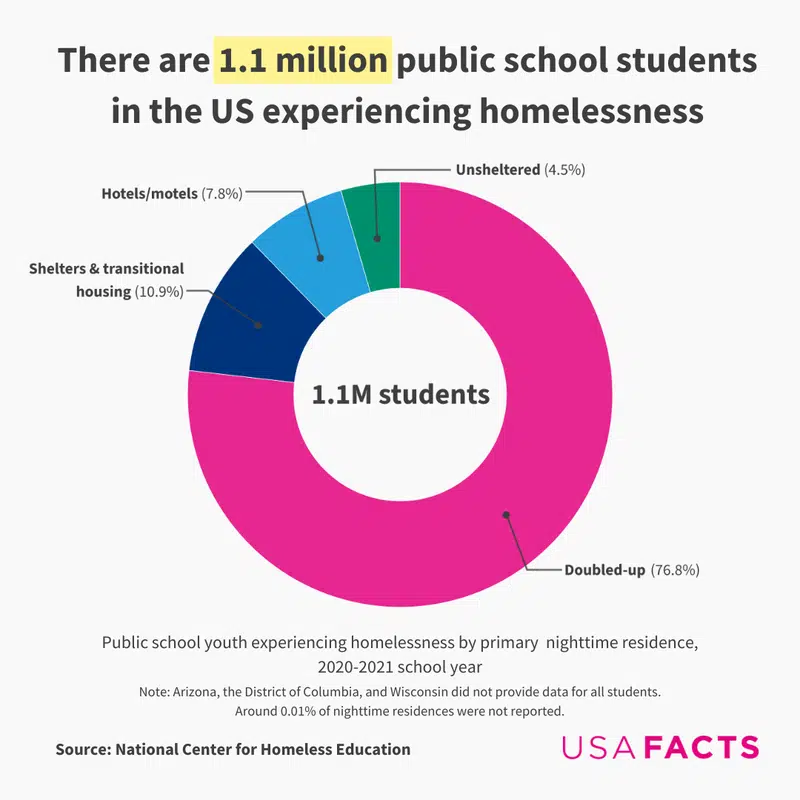
Over a million students experiencing homelessness rely on McKinney-Vento to access school – but many slip through the cracks.
Updated on Mon, May 15, 2023 by the USAFacts Team
Home / Education / Articles / What can McKinney-Vento Act data reveal about youth homelessness?In the 2020–2021 school year, around 1.1 million public school students, or 2.2% of all enrolled students, were identified as experiencing homelessness. This count comes from the Department of Education, which tracks children and youth homelessness through the McKinney-Vento Homeless Assistance Act.
The McKinney-Vento Act is the primary federal law providing educational access for homeless youth, allocating $92 million to public school districts in 2019. It is used to fund everything from personal school supplies, transportation to school, and fees for class projects. In the process, it collects data on student homelessness. The data reveals challenges in identifying students experiencing homelessness, especially after the school shutdowns following COVID-19, as well as getting resources to these students and preventing adverse outcomes.
The act defines homeless children and youths as “individuals who lack a fixed, regular, and adequate nighttime residence.” This includes situations such as:
This definition is broader than other governmental definitions of homelessness. For example, the Department of Housing and Urban Development only counts youth living with relatives as homeless if there is documentation that they will lose housing within 14 days. The act’s more expansive definition allows more students to access services, such as transportation to and from school or basic school supplies.
In the 2020–2021 school year, 1.1 million public school students were identified as experiencing homelessness. Of these students, 76.8% lived temporarily with others due to loss of their own housing, (known as “doubled-up"); 10.9% lived in shelters and 7.8% lived in hotels or motels.

Most identified students experiencing homelessness spend nights doubled-up.
Furthermore, homelessness disproportionately impacts Native, Black, and Hispanic students. While 2.2% of all students were identified as experiencing homelessness, this percentage included 1.3% of white students and 0.9% of Asian students. By comparison, over 3% of Black and Hispanic students and over 4% of Native students experienced homelessness.